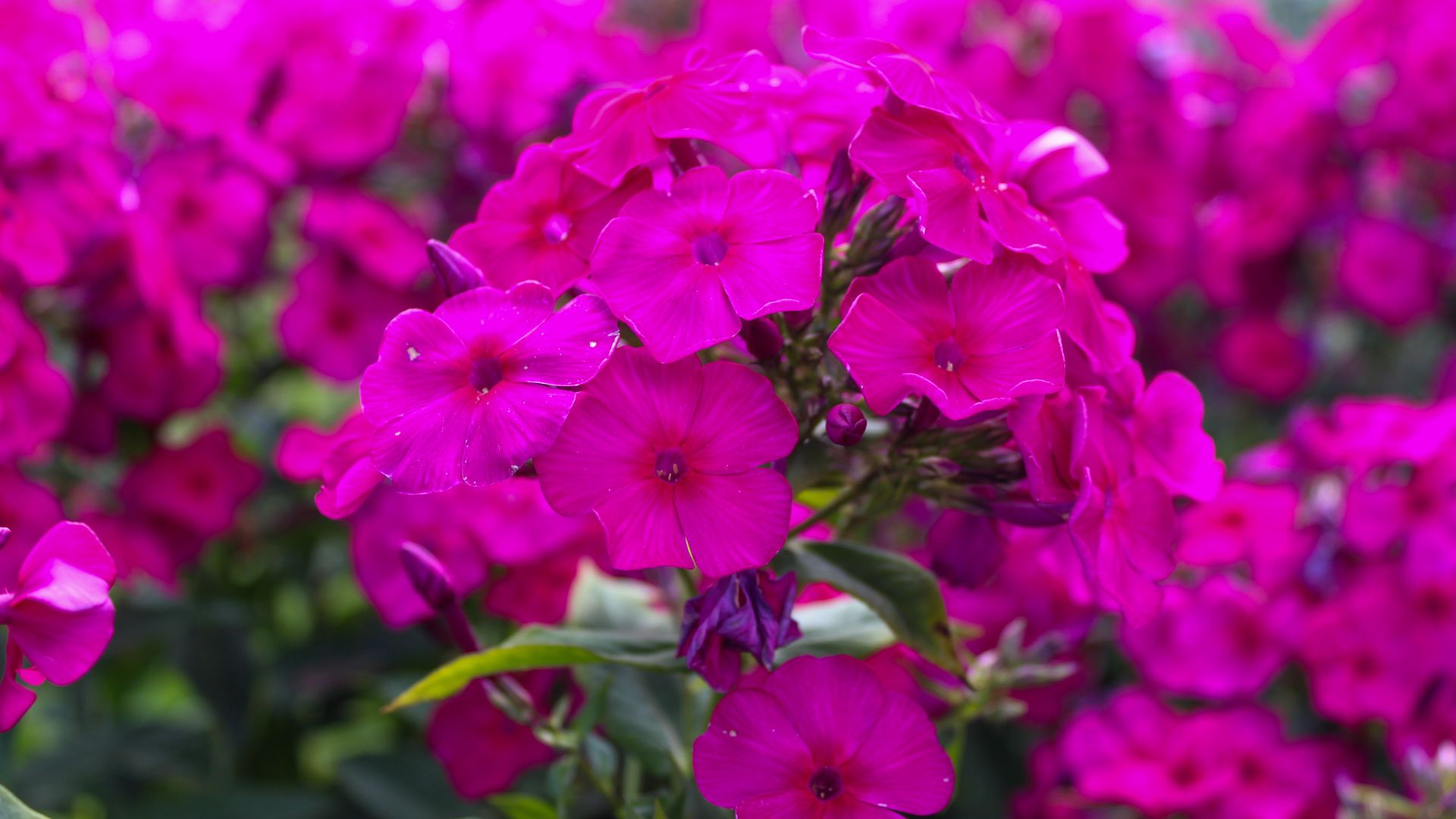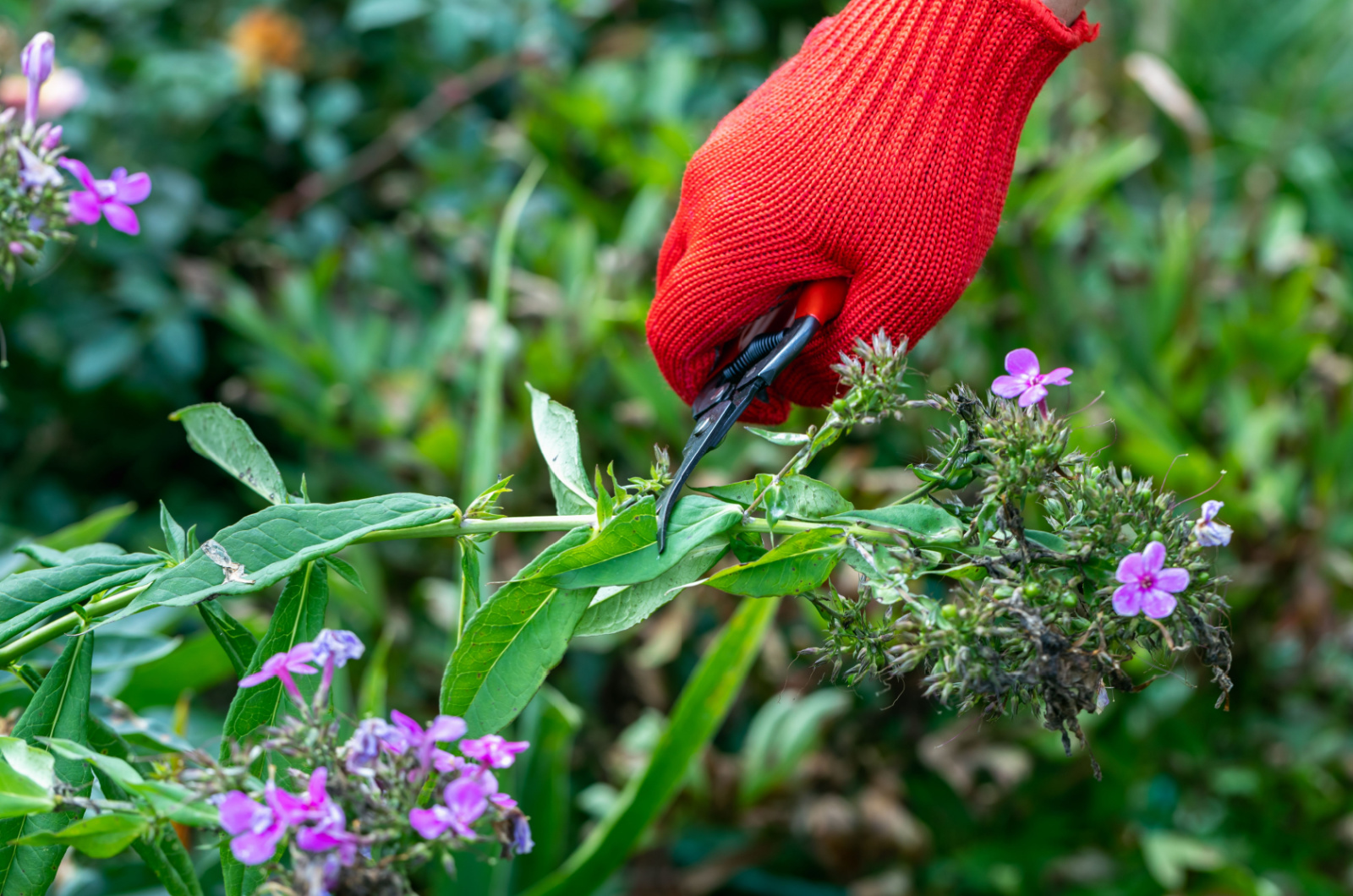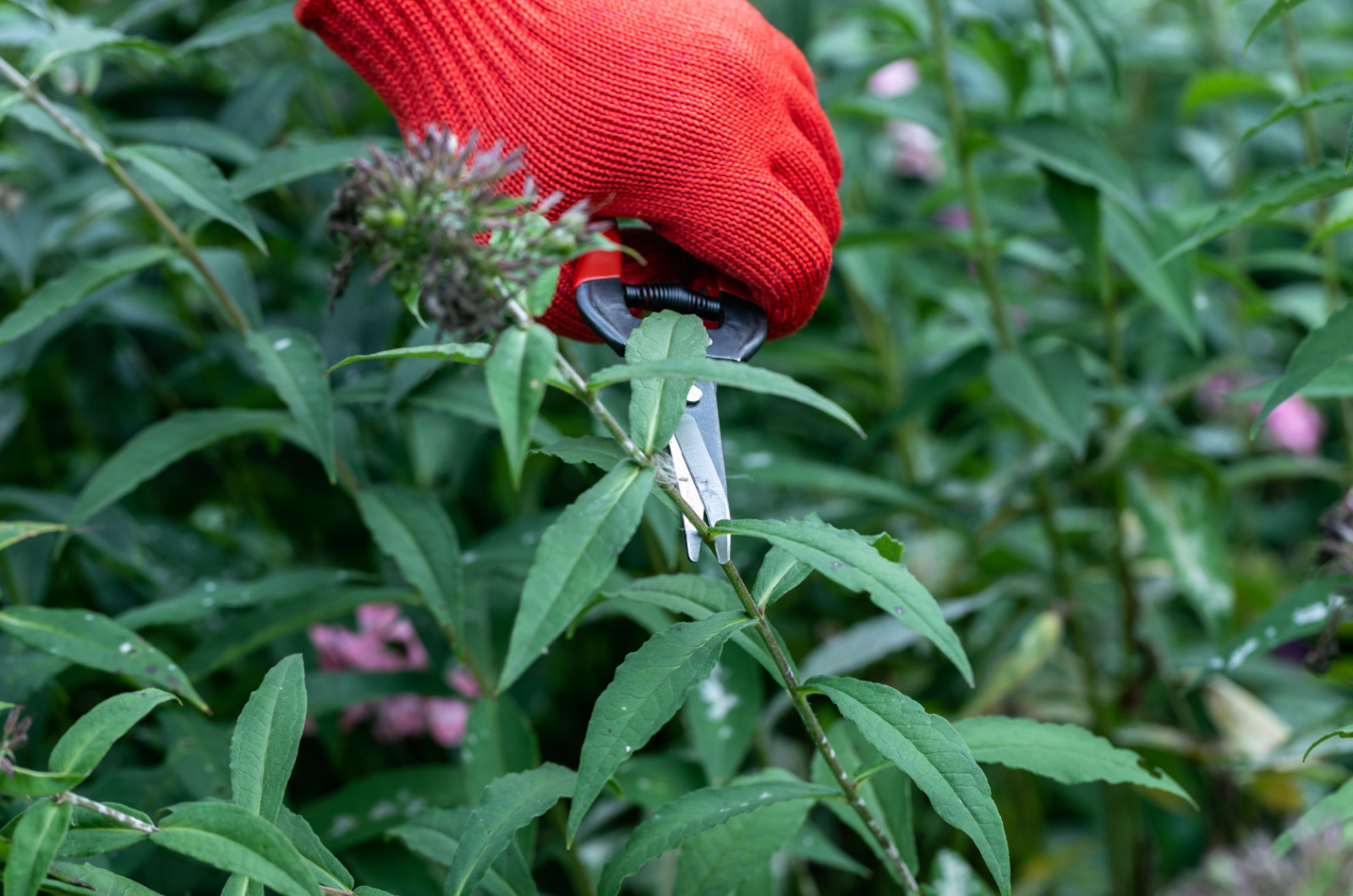Phlox is an amazing flower to add to your summer garden, whether you want some ground coverage or more pollinators.
And the good news is that they don’t require too much maintenance to shine. Of course, you will still need to cut them back to make them produce gorgeous flowers year after year.
But when do we do that? In spring or fall?
Well, you can do it both ways and each method comes with its benefits.
Oh, and creeping phlox has slightly different needs, but I’ll cover that as well, so don’t you worry!
Let’s get started!
Cutting Back Phlox In Fall
There are many flowers that benefit from removing dying growth in fall, such as shasta daisies, coneflowers, black-eyed-susans, bleeding hearts, etc.
And the same can be said for garden phlox. Prune away all the dead growth in fall or even in early winter if you live in warmer regions. Just make sure to wait until all the stems have died so that you don’t miss out on some late flowers.
A good rule of thumb is waiting until fall frosts have blackened all the vegetative growth before taking your pruners and trimming away.
One of the benefits of chopping down phlox in fall is reducing the risk of fungal diseases such as mildew. These infections can affect the dying plant and overwinter in the soil, posing a serious threat to your plant once it perks back up in spring.
And waiting until spring could be quite harmful if fungi spores decide to breed on your plant.
Of course, it is crucial not to compost any trimmed plant material that shows signs of disease. Spores will find a breeding ground in the decomposing matter and infect everything they come into contact with, including plants you feed with your compost.
Aside from reducing the risk of fungal diseases, fall phlox pruning can also prevent pests from hiding in the dying growth and overwintering there. They will “come alive” as soon as the weather warms up, infesting your garden.
And finally, if all this isn’t enough to assure you of fall pruning, this method will help you keep everything clean and organized for the winter.
P.S. Mulch your plants after pruning to protect the crown of the plant from harsh winter temperatures.
Doing It In Spring
Even though fall phlox trimming has its benefits, who’s to say that spring pruning is all bad?
If you want to try out this approach, make sure to cut back your phlox in early spring before the new growth appears.
So, what are the benefits of spring phlox chopping?
Well, the spent flowers will have time to develop into seed pods and they will harbor seeds that will be an excellent food source for birds during trying winter times.
Dried stems and seeds can also add that classic winter aesthetic to your backyard, especially when the plant gets dusted with snow or frost.
Finally, leaving the stems overwinter can actually protect the base of your plant from harsh winter conditions.
However, it really depends on the USDA hardiness zone you live in and the temperatures you get all year round.
For instance, if you live in warmer climates, it would be better to cut back your phlox in spring so that fall pruning doesn’t encourage new growth which will be damaged in winter.
How To Trim Down Phlox
Now, whether you’re applying spring or fall pruning, the technique is the same.
First, use a clean and disinfected set of gardening scissors or pruners so that you don’t transfer any spores or bacteria onto your plants.
Secondly, prune the spent stems about 2-3 inches above the ground. It may seem too harsh, but these flowers die back in winter only to spring back up once the weather warms up. Therefore, you’re not doing anything that will hurt your phlox.
Note: I never add these trimmings to my compost pile because you can never be 100% certain whether pests, bacteria, or fungi spores have infected it.
Is The Technique And Timing The Same For Creeping Phlox?
Creeping phlox has different needs than garden phlox. Both plants need to be pruned once a year, sure, but the timing is very much different.
You should trim creeping phlox right after it finishes blooming. These plants are spring bloomers, but they can produce flowers in early summer, so it’s best to wait until mid-summer to cut them back.
That’s because we only prune these plants for aesthetic purposes and to keep them in check (just like creeping thyme and other perennials with woody bases).
Can You Cut Back Phlox After Flowering?
Pruning phlox after its blooming season is the only time you should do it, whether it is fall or early spring trimming.
Of course, I’m more in favor of fall pruning because it reduces the risk of pests and diseases overwinter, but it really depends on the region you live in, the time you have free in fall or spring, and your own preference.
Is Phlox Perennial?
Phlox is a herbaceous perennial which means it will come back every year to adorn your garden with its gorgeous flowers.
It is easy to grow and maintain, and will shower your garden with blossoms in summer and attract all sorts of pollinators and other beneficial bugs.
All you need to do is mulch them and keep weeds away for these drought-tolerant plants to thrive.
In addition to deadheading and yearly pruning, that’s all the maintenance they need.




